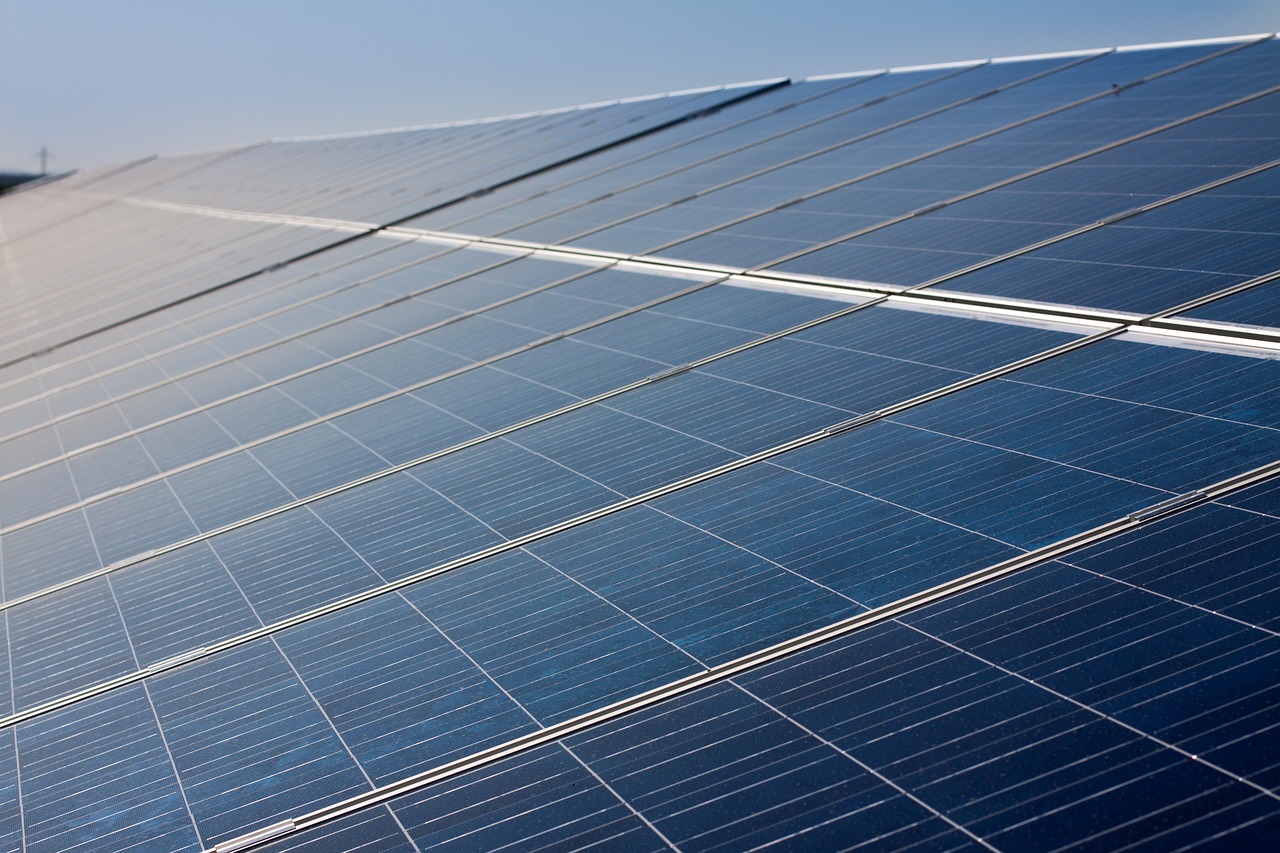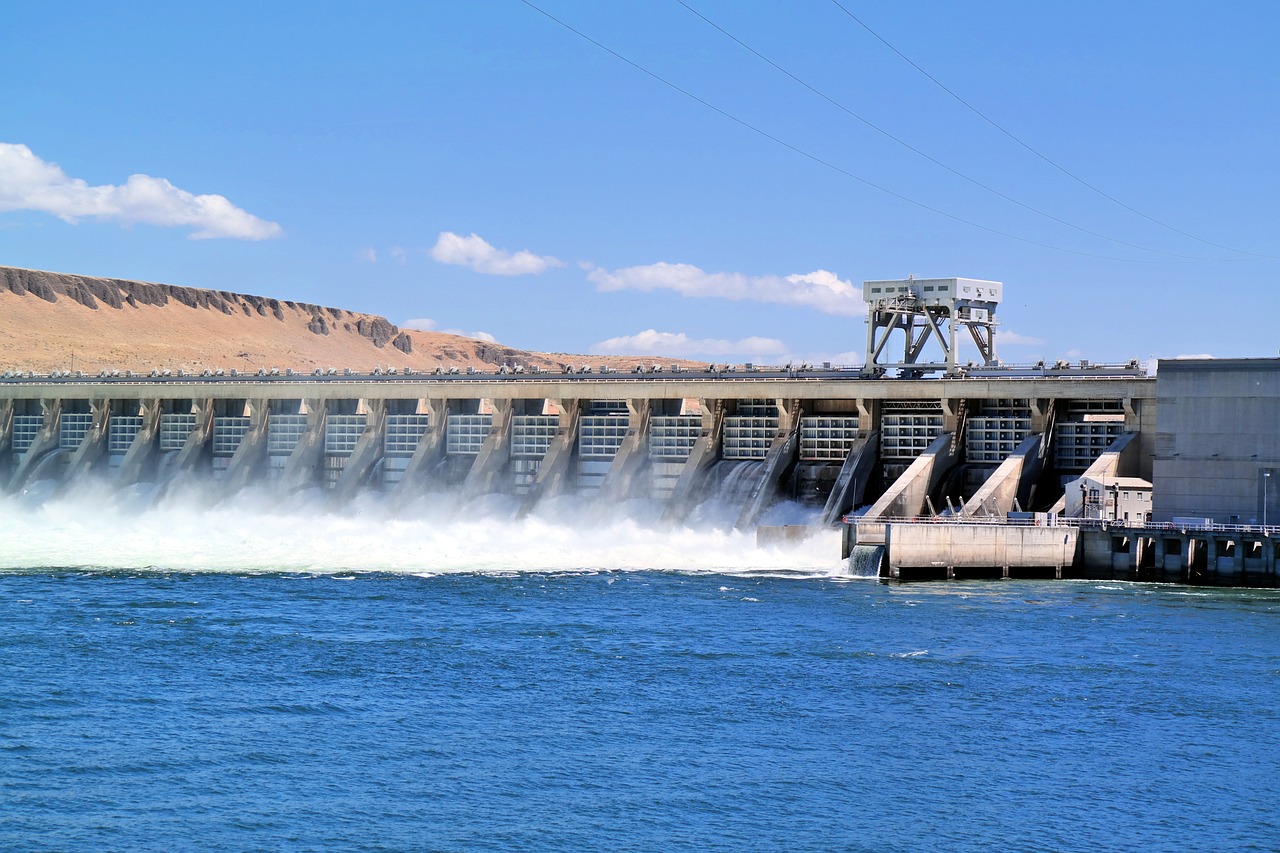Successful Implementations of Green Energy Solutions Across The Globe
The world is currently experiencing a remarkable shift towards green energy solutions, as nations recognize the urgent need to combat climate change and promote sustainable development. From the sun-soaked rooftops of California to the windy plains of Denmark, innovative practices and technologies are being adopted at an unprecedented pace. This article explores the successful implementations of green energy solutions across the globe, showcasing how these initiatives not only contribute to environmental conservation but also spur economic growth and social well-being.
Countries around the globe have taken unique approaches to integrate green energy into their economies. For instance, Germany has emerged as a leader in renewable energy, with its ambitious Energy Transition (Energiewende) policy, which aims to transform its energy system to rely predominantly on renewables. By investing heavily in wind and solar energy, Germany has managed to reduce its carbon emissions significantly while creating thousands of jobs in the green sector.
On the other hand, China has become the world's largest producer of solar panels, driving down costs through mass production and innovation. The Chinese government has implemented policies that encourage investment in renewable energy, resulting in an explosion of solar farms across the country. This not only helps in reducing air pollution but also positions China as a global leader in the green technology market.
The backbone of the green energy revolution is undoubtedly the cutting-edge technologies that are being developed and deployed. These advancements are crucial for enhancing the efficiency and affordability of renewable energy sources. For example, the latest solar panels boast higher efficiency rates, allowing for more energy generation from smaller surface areas. This is particularly beneficial for urban areas where space is limited.
Recent advancements in solar technology have made it increasingly accessible for a broader audience. The cost of solar panels has plummeted by over 80% in the last decade, making solar energy a viable option for homeowners and businesses alike. One of the most exciting developments is the emergence of residential solar solutions, where homeowners can install solar panels on their rooftops, significantly reducing their electricity bills while contributing to a cleaner environment.
With various incentives offered by governments, such as tax credits and rebates, the adoption of residential solar energy systems has surged. Homeowners are not only saving money but also gaining energy independence. This shift towards solar energy is akin to planting a tree that grows over time, offering shade and fruit for years to come.
In addition to residential solutions, utility-scale solar projects have emerged as a game-changer in energy production. These large solar farms can generate vast amounts of electricity, feeding it directly into the grid. Countries like India have launched ambitious projects, such as the Rewa Ultra Mega Solar Park, which is set to provide clean energy to millions while significantly reducing greenhouse gas emissions.
Wind energy is another area where innovations are making waves. The development of offshore wind farms has opened up new possibilities for energy generation. These farms harness the powerful winds over oceans, producing clean energy with minimal environmental impact. Advances in turbine design have also enhanced energy generation efficiency, making wind a more competitive player in the energy market.
Government policies play a vital role in promoting green energy solutions. By implementing subsidies, tax credits, and renewable energy mandates, governments can incentivize both businesses and consumers to shift towards renewable sources. This creates a favorable environment for investments in green technologies, leading to a more sustainable future.
International agreements, such as the Paris Accord, serve as a framework for countries to commit to reducing carbon emissions and adopting greener practices. These agreements encourage nations to set ambitious targets, fostering collaboration and knowledge sharing that accelerates the transition to renewable energy.
On a more localized level, many governments are launching initiatives that support community-based renewable energy projects. These grassroots efforts not only empower communities but also enhance public awareness about the benefits of renewable energy. By participating in local projects, citizens can see firsthand the positive impacts of green energy on their environment and economy.
Despite the progress, challenges remain in the widespread implementation of green energy solutions. Financial barriers, such as high initial investment costs, can deter potential adopters. However, innovative funding solutions, including green bonds and crowdfunding platforms, are emerging to support sustainable projects.
Addressing financial challenges is crucial for the transition to green energy. By developing financing options that lower upfront costs, we can encourage more individuals and businesses to invest in renewable technologies. This is akin to offering a helping hand to someone climbing a steep hill; it makes the journey much more manageable.
Finally, public awareness and education are essential in promoting green energy solutions. When communities understand the benefits and opportunities associated with renewable energy, they are more likely to participate in the movement. Educational campaigns and community workshops can illuminate the path towards a greener future, ensuring that everyone is on board.
- What are green energy solutions? Green energy solutions refer to renewable energy sources such as solar, wind, hydro, and geothermal that have a lower environmental impact compared to fossil fuels.
- How can I adopt green energy in my home? Homeowners can install solar panels, use energy-efficient appliances, and participate in local renewable energy programs to transition to green energy.
- What role do governments play in promoting green energy? Governments can implement policies, provide incentives, and support renewable energy projects to encourage the adoption of green energy solutions.

Global Case Studies
When we talk about green energy solutions, it's fascinating to see how different countries have embraced these innovations in their own unique ways. Each nation has carved out a path that reflects its resources, culture, and commitment to sustainability. For instance, let’s take a closer look at countries like Germany, China, and Denmark, which have all made significant strides in renewable energy adoption.
Germany, often hailed as a pioneer in the green energy movement, has implemented its “Energiewende” policy, aiming for a drastic reduction in greenhouse gas emissions. This ambitious approach has led to a remarkable increase in the use of solar and wind energy. In fact, in 2020, renewable sources accounted for over 40% of the country’s electricity consumption, showcasing the effectiveness of government policies and public support in driving this transition.
On the other side of the globe, China has emerged as the world's largest producer of solar panels and wind turbines. The Chinese government has invested heavily in renewable energy infrastructure, setting a target of reaching 20% of its primary energy consumption from non-fossil fuels by 2025. This commitment has not only transformed the energy landscape in China but has also created millions of jobs in the renewable sector, proving that green energy can fuel economic growth while protecting the environment.
Meanwhile, Denmark stands out for its impressive wind energy achievements. With more than 47% of its electricity generated from wind power in 2019, Denmark has become a global leader in this field. The country’s focus on offshore wind farms has significantly contributed to its energy independence and reduced reliance on fossil fuels. This success story illustrates how a small nation can lead by example and inspire others to follow suit.
These case studies reveal that successful implementation of green energy solutions is not a one-size-fits-all approach. Each country has tailored its strategies to fit its unique circumstances, which is crucial for inspiring global action. To further understand these implementations, we can summarize some key statistics:
| Country | Renewable Energy Share (%) | Key Initiative |
|---|---|---|
| Germany | 40+ | Energiewende Policy |
| China | 20 (target by 2025) | Massive Investment in Solar and Wind |
| Denmark | 47 | Offshore Wind Farms |
In conclusion, these global case studies highlight the diverse approaches and strategies that nations are employing to transition to greener energy sources. The commitment to sustainability is not just about reducing carbon footprints; it's also about creating a sustainable future for generations to come. These examples serve as a beacon of hope and a call to action for other countries to adopt similar practices, ensuring that the green energy revolution continues to gain momentum.

Innovative Technologies
In the rapidly evolving landscape of energy production, are playing a pivotal role in the transition towards green energy solutions. These advancements are not just reshaping how we generate power, but they are also redefining our relationship with energy consumption. Imagine a world where the sun and wind are our primary sources of energy, seamlessly integrated into our daily lives. This vision is becoming a reality as we explore the latest breakthroughs in solar and wind energy technologies.
One of the most exciting developments in this field is the enhancement of solar energy technologies. Recent advancements have led to significant improvements in the efficiency of solar panels, allowing them to convert more sunlight into usable energy. For instance, traditional solar panels operated at around 15-20% efficiency, but cutting-edge designs now boast efficiencies exceeding 25%. This leap in technology not only maximizes energy output but also reduces the cost per watt, making solar power more accessible to homeowners and businesses alike.
As we dive deeper into the realm of solar energy, the rise of residential solar solutions has been remarkable. Homeowners are increasingly turning to solar panels as a way to reduce their energy bills and contribute to environmental sustainability. Many regions offer incentives such as tax credits and rebates, making the initial investment more appealing. In fact, a recent study revealed that households with solar installations can save up to 30% on their electricity costs over the lifespan of the system. This not only benefits the environment but also significantly boosts the local economy by creating jobs in installation and maintenance.
On a larger scale, utility-scale solar projects are transforming energy production in various countries. These massive installations can generate hundreds of megawatts of power, enough to supply thousands of homes. For instance, the Noor Ouarzazate Solar Complex in Morocco is one of the largest solar power plants in the world, with a capacity of 580 MW. Such projects not only provide clean energy but also contribute to energy security and independence, reducing reliance on fossil fuels.
Wind energy is another area where innovation is thriving. The development of offshore wind farms has opened up new possibilities for harnessing wind energy. These farms, located in bodies of water, can take advantage of stronger and more consistent winds, leading to higher energy production. The integration of advanced turbine designs, which are taller and more efficient, has further increased the capacity of these installations. For example, the Hornsea One project in the UK is currently the largest offshore wind farm in the world, generating enough power to supply over one million homes.
Moreover, the ongoing improvements in turbine technology are not just about size; they also focus on reducing costs and enhancing durability. With innovations like smart turbines that can adjust their blades to optimize energy capture based on wind conditions, the efficiency of wind energy production is reaching new heights. These advancements are crucial as they help lower the cost of wind energy, making it a more competitive alternative to traditional energy sources.
As we look towards the future, the integration of these innovative technologies into existing energy infrastructures will be vital. The challenge lies in ensuring that these solutions are not only effective but also sustainable. By embracing these advancements, we can pave the way for a cleaner, greener planet.
- What are the main benefits of solar energy?
Solar energy reduces electricity bills, decreases dependence on fossil fuels, and lowers greenhouse gas emissions. - How do wind farms impact the environment?
Wind farms produce clean energy with minimal emissions, but they can affect local wildlife and landscapes, which must be managed carefully. - Are there incentives for installing solar panels?
Yes, many regions offer tax credits, rebates, and financing options to encourage solar panel installations. - What is the future of green energy technology?
The future looks promising with ongoing innovations in efficiency, storage solutions, and grid integration, making renewable energy more accessible.

Solar Energy Advancements
In recent years, the world has witnessed remarkable advancements in solar energy technology, transforming it from a niche market into a mainstream energy solution. As we delve into this topic, it's essential to understand not only the innovations but also the implications they hold for our planet and economy. Imagine harnessing the power of the sun, a virtually limitless energy source, in ways that are both efficient and cost-effective. This isn't just a dream anymore; it's becoming a reality.
One of the most significant breakthroughs in solar energy has been the improvement in solar panel efficiency. Traditional solar panels typically convert about 15-20% of sunlight into electricity. However, cutting-edge technologies have pushed this figure to over 25% in some cases. This leap in efficiency means that less space is required to generate the same amount of energy, making solar installations more feasible in urban areas where space is at a premium. For instance, the development of bifacial solar panels, which can capture sunlight from both sides, has further enhanced energy output.
Cost reductions have also played a critical role in the widespread adoption of solar energy. The price of solar panels has dropped by nearly 90% over the past decade, making solar power accessible to a broader audience. This dramatic decrease is primarily due to advancements in manufacturing processes and materials, such as the use of perovskite solar cells, which are cheaper to produce and offer higher efficiency rates. As the cost continues to decline, more homeowners and businesses are considering solar energy as a viable option for their energy needs.
Moreover, the integration of solar energy into existing energy infrastructures has been revolutionized by smart grid technologies. These systems allow for better management of energy distribution, ensuring that solar energy can be utilized efficiently, even when the sun isn’t shining. For example, energy storage solutions, like advanced battery systems, enable homeowners to store excess energy generated during the day for use at night. This not only enhances energy independence but also stabilizes the grid during peak demand times.
To illustrate the impact of these advancements, let’s take a look at a few notable projects around the globe:
| Project Name | Location | Capacity (MW) | Year Completed |
|---|---|---|---|
| Noor Ouarzazate Solar Complex | Morocco | 580 | 2016 |
| Bhadla Solar Park | India | 2245 | 2019 |
| Tengger Desert Solar Park | China | 1547 | 2017 |
These projects not only showcase the capacity of solar energy but also highlight the commitment of various nations to invest in sustainable solutions. The environmental benefits are profound; by reducing reliance on fossil fuels, solar energy contributes to lower greenhouse gas emissions, aiding in the fight against climate change.
As we continue to innovate and improve upon existing technologies, the future of solar energy looks incredibly bright. With ongoing research and development, we can expect even more efficient solar panels, better energy storage solutions, and smarter integration into our energy networks. This is not just about harnessing energy; it’s about creating a sustainable future for generations to come.
- What are the main benefits of solar energy? Solar energy is renewable, reduces electricity bills, and decreases greenhouse gas emissions.
- How do solar panels work? Solar panels convert sunlight into electricity using photovoltaic cells.
- Are there incentives for installing solar panels? Yes, many governments offer tax credits, rebates, and other incentives to encourage solar adoption.
- Can solar energy power my entire home? Yes, with the right system size and battery storage, solar energy can power your entire home.

Residential Solar Solutions
In recent years, the adoption of has skyrocketed, transforming the way homeowners approach energy consumption. Imagine harnessing the power of the sun right from your rooftop! Not only does this shift contribute to a greener planet, but it also offers substantial financial benefits to homeowners. With the decreasing costs of solar panels and advances in technology, going solar is becoming more accessible than ever.
One of the most appealing aspects of residential solar energy systems is their ability to significantly reduce monthly electricity bills. By generating your own electricity, you can minimize your reliance on traditional power sources, which often come with fluctuating prices. In fact, many homeowners report savings of up to 50% or more on their energy bills after installing solar panels. It’s like having a personal power plant right at home!
Moreover, there are various incentives available to encourage the adoption of solar energy. For instance, many governments offer tax credits, rebates, and even financing options that make it easier for homeowners to invest in solar technology. These incentives can significantly lower the upfront costs, making solar energy a viable option for a broader range of people. In some regions, homeowners can even benefit from net metering, which allows them to sell excess energy back to the grid, further offsetting costs.
But what about the technology behind these systems? Most residential solar solutions consist of photovoltaic (PV) panels that convert sunlight into electricity. These panels have become more efficient over the years, with many now boasting efficiencies of over 20%. This means that homeowners can generate more energy from the same amount of sunlight, making solar power even more appealing.
In addition to traditional solar panels, there are also innovative options such as solar shingles and solar battery storage systems. Solar shingles blend seamlessly into the roof, providing a sleek appearance while generating energy. On the other hand, battery storage systems allow homeowners to store excess energy produced during the day for use at night or during power outages. This capability enhances energy independence and ensures that you have power when you need it most.
As the popularity of residential solar solutions continues to grow, so does the emphasis on community engagement and education. Many local governments and organizations are working to raise awareness about the benefits of solar energy. Workshops, informational sessions, and community solar programs are becoming more common, helping to demystify the installation process and empower homeowners to make informed decisions.
In conclusion, residential solar solutions represent a significant step towards a more sustainable future. With the combination of technological advancements, financial incentives, and community support, going solar is not just a trend; it's a movement towards energy independence and environmental stewardship. So, if you’re considering making the switch, now is the perfect time to embrace the sun’s energy!
- What are the main benefits of residential solar solutions?
Residential solar solutions can lead to significant electricity savings, reduce carbon footprints, and increase property value. - How much do residential solar panels cost?
The cost can vary widely based on location, system size, and available incentives, but many homeowners find that the long-term savings outweigh the initial investment. - Do I need to have a south-facing roof to install solar panels?
No, while south-facing roofs are ideal, solar panels can still be effective on east or west-facing roofs, though the energy production may vary. - What happens on cloudy days?
Solar panels can still generate electricity on cloudy days, although their efficiency may be reduced. Energy storage systems can help mitigate this issue.

Utility-Scale Solar Projects
Utility-scale solar projects are the **heavyweights** of renewable energy production, transforming vast stretches of land into clean energy powerhouses. These projects are designed to generate electricity on a large scale, typically supplying energy directly to the grid, which means they can power thousands of homes and businesses. Imagine a sprawling solar farm, with rows upon rows of glistening solar panels soaking up the sun's rays—this is not just a vision of the future; it’s happening right now across the globe!
One of the most remarkable aspects of utility-scale solar projects is their capacity to significantly reduce greenhouse gas emissions. For instance, the **Copper Mountain Solar Facility** in Nevada, USA, boasts a staggering capacity of 802 megawatts (MW), which is enough to power around 250,000 homes. By replacing fossil fuel-based energy with solar power, projects like this contribute to a **cleaner environment**, helping combat climate change and promoting sustainable development.
These projects are not just about generating power; they also create jobs and stimulate local economies. The construction and maintenance of solar farms require a skilled workforce, leading to employment opportunities in various sectors, from engineering to installation. Moreover, many utility-scale solar projects are developed in partnership with local communities, ensuring that the benefits of clean energy are shared widely. For example, the **Noor Solar Complex** in Morocco is not only a beacon of renewable energy but also a model for job creation and community engagement.
However, utility-scale solar projects do come with their challenges. Land use can be a contentious issue, particularly in areas where agricultural land is being repurposed for solar farms. Environmental considerations, such as the impact on local wildlife and ecosystems, must also be addressed. To mitigate these concerns, developers often conduct extensive environmental assessments and engage with stakeholders to find the best solutions.
To give you a clearer picture of the impact of utility-scale solar projects, here’s a table highlighting some of the largest solar farms around the world:
| Project Name | Location | Capacity (MW) | Year Completed |
|---|---|---|---|
| Copper Mountain Solar Facility | Nevada, USA | 802 | 2015 |
| Noor Solar Complex | Morocco | 580 | 2018 |
| Bhadla Solar Park | Rajasthan, India | 2245 | 2020 |
| Tengger Desert Solar Park | China | 1547 | 2017 |
As we look to the future, the role of utility-scale solar projects will only grow. With advancements in technology and decreasing costs, these projects are becoming more viable and efficient. Governments worldwide are recognizing the potential of solar energy, implementing policies that encourage investment in large-scale renewable energy projects. So, whether you’re a homeowner considering solar panels for your roof or a policymaker looking to boost your country’s renewable energy portfolio, utility-scale solar projects represent a **bright** and **sustainable** future for us all.
- What is a utility-scale solar project? A utility-scale solar project is a large solar energy installation that generates electricity for the grid, typically with a capacity of 1 MW or more.
- How do utility-scale solar projects benefit the environment? They reduce reliance on fossil fuels, lower greenhouse gas emissions, and promote cleaner air and water.
- What are the challenges associated with utility-scale solar projects? Challenges include land use conflicts, environmental impact concerns, and the need for substantial initial investment.
- Are utility-scale solar projects cost-effective? Yes, advancements in technology have led to significant cost reductions, making them increasingly viable and competitive with traditional energy sources.

Wind Energy Innovations
Wind energy has become a cornerstone of the global shift towards sustainable energy solutions, and innovations in this field are propelling us into a cleaner future. From cutting-edge turbine designs to the development of offshore wind farms, the advancements in wind energy technology are nothing short of revolutionary. Imagine harnessing the power of the wind, which is both abundant and renewable, to generate electricity that can light up entire cities. That’s precisely what these innovations are making possible!
One of the most exciting developments in wind energy is the design of vertical-axis wind turbines (VAWTs). Unlike traditional horizontal-axis turbines, VAWTs can capture wind from any direction. This flexibility makes them ideal for urban environments where wind patterns can be unpredictable. Additionally, VAWTs are generally quieter and less visually intrusive, making them more acceptable to communities. For instance, cities like San Diego have begun integrating these turbines into their skyline, providing clean energy without compromising aesthetics.
Another significant innovation is in the realm of offshore wind farms. These massive installations, located in bodies of water, can harness stronger and more consistent winds than their onshore counterparts. The technology behind floating wind turbines is particularly groundbreaking. These turbines are anchored to the seabed and can be placed in deeper waters, opening up vast new areas for wind energy production. Countries like Denmark and the UK are leading the charge, with projects that generate thousands of megawatts of clean energy. The table below highlights some of the largest offshore wind farms currently operational:
| Wind Farm Name | Location | Capacity (MW) | Year Commissioned |
|---|---|---|---|
| Hornsea One | UK | 1,218 | 2019 |
| Walney Extension | UK | 659 | 2018 |
| Gemini | Netherlands | 600 | 2017 |
| London Array | UK | 630 | 2013 |
In addition to turbine design and placement, advancements in energy storage technologies are also crucial. As wind energy generation can be intermittent, integrating systems like lithium-ion batteries or even pumped hydro storage can help stabilize the grid. This means that even when the wind isn’t blowing, we can still rely on stored energy to meet demand. It’s like having a backup generator that kicks in whenever you need it!
Moreover, the integration of smart grid technology is enhancing the efficiency of wind energy distribution. By using real-time data and analytics, energy providers can better manage and distribute the electricity generated from wind farms. This ensures that the energy produced is used efficiently and reduces waste. Imagine a system that can predict when the wind will blow and adjust energy distribution accordingly—this is the future of energy management!
As we continue to innovate and improve wind energy technologies, we’re not just creating a cleaner energy future; we’re also driving economic growth. The wind energy sector is creating jobs in manufacturing, installation, and maintenance. It’s a win-win situation: cleaner energy and more jobs! With the global demand for renewable energy on the rise, investing in wind energy innovations is not just an environmental imperative; it’s an economic opportunity.
In conclusion, the innovations in wind energy are paving the way for a sustainable future. From advanced turbine designs to offshore wind farms, and the integration of smart technologies, we’re witnessing a transformation in how we harness the power of the wind. The journey is just beginning, and with continued investment and interest, the sky really is the limit for wind energy!
- What are the main benefits of wind energy? Wind energy is renewable, reduces greenhouse gas emissions, and can create jobs in various sectors.
- How do offshore wind farms work? Offshore wind farms use large turbines placed in bodies of water to capture wind energy, which is then converted into electricity.
- What is the future of wind energy? The future of wind energy looks promising with ongoing innovations in technology, increased efficiency, and a growing demand for renewable energy sources.

Government Policies and Incentives
Government policies and incentives play a crucial role in the successful implementation of green energy solutions across the globe. By creating a supportive framework, governments can encourage investments in renewable energy technologies, stimulate innovation, and foster a culture of sustainability. One of the most effective ways to achieve this is through subsidies and tax credits, which can significantly lower the initial costs associated with renewable energy projects. For instance, many countries offer tax incentives for homeowners who install solar panels, thereby making it more financially viable for individuals to transition to clean energy.
Moreover, renewable energy mandates can compel utility companies to increase their share of green energy in their portfolios. These mandates not only drive the growth of renewable energy but also create a competitive market that encourages innovation. Countries like Germany and Denmark have successfully implemented such policies, resulting in substantial increases in wind and solar energy production.
In addition to national policies, local governments also have a pivotal role in promoting green energy solutions. They can initiate community-based projects that engage residents and foster grassroots participation. For example, local governments can provide funding for community solar farms, allowing multiple households to benefit from a single solar installation. This not only democratizes access to renewable energy but also strengthens community bonds.
To further illustrate the impact of government policies, consider the following table that outlines some key incentives provided by various countries:
| Country | Incentive Type | Description |
|---|---|---|
| United States | Tax Credit | Investment Tax Credit (ITC) allows homeowners and businesses to deduct a percentage of the cost of installing solar systems from their federal taxes. |
| Germany | Feed-in Tariff | Guarantees a fixed payment for renewable energy producers, encouraging investments in solar and wind energy. |
| China | Subsidy | Government provides financial support for solar panel manufacturers and installers to promote domestic production and installation. |
| Denmark | Renewable Energy Certificates | Utility companies must obtain certificates for a certain percentage of their energy from renewable sources, driving investment in green technologies. |
As we can see, these incentives not only promote the adoption of renewable energy but also create jobs and stimulate economic growth. However, it's essential to ensure that these policies are continually assessed and adapted to meet changing market conditions and technological advancements. The success of green energy initiatives largely depends on the commitment of governments to support these transitions and the willingness of communities to embrace sustainable practices.
In conclusion, effective government policies and incentives are the backbone of the green energy movement. By combining national mandates with local initiatives, countries can create a robust framework that not only supports the growth of renewable energy but also encourages public participation. The journey towards a sustainable future is a collective effort, and with the right policies in place, we can pave the way for a cleaner, greener planet.
- What are renewable energy mandates? Renewable energy mandates are regulations that require utility companies to obtain a certain percentage of their energy from renewable sources.
- How do tax credits work for renewable energy? Tax credits allow individuals or businesses to reduce their tax liability by a specific percentage of the costs incurred for renewable energy installations.
- What role do local governments play in promoting green energy? Local governments can initiate community-based renewable energy projects, provide funding, and create policies that support the adoption of green technologies.
- Can government incentives lead to job creation? Yes, government incentives can stimulate investments in renewable energy, leading to the creation of jobs in manufacturing, installation, and maintenance of green technologies.

International Agreements
International agreements play a pivotal role in shaping global efforts towards green energy solutions. They serve as a critical framework for nations to collaborate, share knowledge, and commit to reducing their carbon footprints. One of the most significant agreements in recent history is the Paris Accord, established in 2015. This landmark treaty brought together nearly 200 countries with a common goal: to limit global warming to well below 2 degrees Celsius above pre-industrial levels, while pursuing efforts to restrict the temperature increase to 1.5 degrees Celsius.
But how do these agreements actually influence national policies? Well, they create a sense of accountability. Countries that sign these agreements are often required to submit their Nationally Determined Contributions (NDCs), which outline their plans to reduce greenhouse gas emissions. This not only encourages countries to adopt greener technologies but also fosters a spirit of competition among nations to see who can be the most innovative and effective in their approaches.
For instance, the European Union has taken significant strides in implementing policies aligned with the Paris Accord. They have set ambitious targets for renewable energy, aiming for at least 32% of energy consumption to come from renewable sources by 2030. This has led to a surge in investments in wind and solar energy across member states. Similarly, countries like Germany have implemented their own ambitious plans, known as the Energiewende, which translates to "energy transition." This initiative focuses on increasing renewable energy usage and reducing reliance on fossil fuels.
Moreover, international agreements often pave the way for financial support and technology transfer from developed to developing nations. For example, the Green Climate Fund was established to assist developing countries in their efforts to combat climate change and transition to sustainable energy. This fund is crucial for nations that may lack the financial resources to invest in green technologies independently.
However, it’s important to recognize that while these international agreements set the stage for progress, the real change happens at the local level. Local governments must take the lead in implementing these policies and engaging their communities. This grassroots participation is vital for the success of any international agreement. When local communities understand the benefits of green energy and see the tangible impacts of these policies, they are more likely to support and participate in sustainable practices.
In conclusion, international agreements are not just pieces of paper; they are powerful tools that can drive substantial change in the global energy landscape. They encourage collaboration, set ambitious goals, and provide much-needed support for nations striving to implement green energy solutions. As we move forward, the challenge will be to ensure these agreements translate into real-world actions that benefit both the planet and its inhabitants.
- What is the Paris Accord? The Paris Accord is an international treaty aimed at combating climate change by limiting global warming.
- How do international agreements influence local policies? They create accountability and encourage countries to set ambitious renewable energy targets.
- What role does the Green Climate Fund play? It provides financial support to developing countries for their green energy initiatives.

Local Government Initiatives
Local governments play a pivotal role in the transition to green energy solutions. They are often the first line of action, implementing initiatives that not only promote renewable energy but also engage the community in sustainable practices. By tailoring their approaches to the unique needs of their regions, local authorities can create impactful programs that foster a culture of sustainability.
One remarkable example is the city of San Diego, California, which has set an ambitious goal of achieving 100% renewable energy by 2035. This initiative is not just a lofty aspiration; it is backed by a detailed plan that includes investments in solar energy, wind power, and energy efficiency upgrades for public buildings. The city has also launched several community outreach programs aimed at educating residents about the benefits of renewable energy, making it easier for them to participate in the transition.
Moreover, many local governments are establishing community solar programs. These initiatives allow residents who cannot install solar panels on their properties to benefit from solar energy. For instance, in Minnesota, local governments have partnered with energy companies to create community solar gardens, where residents can subscribe to receive solar power generated off-site. This not only expands access to clean energy but also fosters a sense of community involvement and ownership.
Another innovative approach is the implementation of green building codes at the local level. Cities like Seattle have adopted stringent energy efficiency standards for new constructions, ensuring that buildings are equipped with the latest sustainable technologies. These codes often include requirements for energy-efficient appliances, better insulation, and the use of renewable energy sources. By mandating these practices, local governments are setting a standard that encourages developers and homeowners to prioritize sustainability.
In addition to these initiatives, local governments often provide financial incentives to encourage the adoption of green technologies. This can include tax credits, grants, or low-interest loans for residents and businesses that invest in renewable energy systems. For example, the City of Austin offers a variety of rebates for solar panel installations, making it more financially feasible for homeowners to switch to solar energy. Such incentives not only reduce the upfront costs but also contribute to long-term savings on energy bills.
Furthermore, local governments frequently collaborate with non-profit organizations and community groups to promote renewable energy education and awareness. These partnerships can lead to workshops, informational sessions, and even local festivals focused on sustainability. By engaging the community in this way, local governments can foster a more informed public that is eager to embrace green energy solutions.
However, while these initiatives are commendable, they are not without challenges. Local governments must navigate budget constraints and competing priorities, which can hinder their ability to implement or expand green energy programs. Nevertheless, the creative strategies employed by many local governments demonstrate that with determination and community support, significant strides can be made toward a more sustainable future.
In conclusion, local government initiatives are essential in the broader context of the green energy revolution. They serve as a bridge between policy and community action, ensuring that renewable energy solutions are not only accessible but also widely adopted. As more localities embrace these initiatives, the collective impact can lead to a substantial reduction in carbon emissions and a healthier planet for future generations.
- What are local government initiatives in green energy?
Local government initiatives in green energy include programs and policies designed to promote renewable energy sources, improve energy efficiency, and engage the community in sustainability efforts. - How can I get involved in local green energy programs?
You can get involved by participating in community meetings, enrolling in local solar programs, or taking advantage of financial incentives offered for renewable energy installations. - What financial incentives do local governments offer for green energy?
Incentives may include tax credits, rebates, grants, and low-interest loans for individuals and businesses that invest in renewable energy technologies.

Challenges and Solutions
Transitioning to green energy is not just a walk in the park; it’s more like navigating a maze filled with challenges that can seem daunting at first. While the potential benefits of renewable energy are enormous, the journey toward a sustainable future is littered with hurdles that need to be addressed. One of the most significant challenges is the financial barrier. The initial investment required for renewable energy technologies can be substantial, making it difficult for individuals and small businesses to make the switch. However, innovative funding solutions, such as green bonds and crowdfunding platforms, are emerging to help bridge this gap. For instance, some countries have introduced low-interest loans specifically for green energy projects, allowing more people to invest in their energy future.
Another challenge is the lack of public awareness and education. Many people are still unaware of the benefits of green energy or how to access it. This knowledge gap can lead to skepticism and resistance to change. To combat this, community outreach programs and educational campaigns are vital. Schools, local governments, and non-profits can play a significant role in spreading the word about renewable energy options. For example, workshops and informational sessions can demystify solar and wind energy, showing how they can be integrated into everyday life.
Moreover, the intermittency of renewable energy sources poses a challenge. Solar and wind energy, while abundant, are not always available. This variability can lead to reliability issues in energy supply. To address this, advancements in energy storage technology, such as batteries and pumped hydro storage, are crucial. These technologies can store excess energy generated during peak production times for use when production dips, ensuring a more stable energy supply.
Lastly, regulatory hurdles can slow down the implementation of green energy solutions. In many regions, outdated regulations and policies do not support the integration of renewable energy into the existing grid. Advocacy for policy reform is essential. By engaging with local and national governments, communities can push for legislation that supports renewable energy initiatives, such as tax incentives for solar panel installations or streamlined permitting processes for wind farms.
In summary, while the path to a greener future is fraught with challenges, there are numerous solutions available. By addressing financial barriers, enhancing public awareness, investing in energy storage, and advocating for policy reform, we can create a more sustainable energy landscape. The journey may be complex, but with collective effort and innovative thinking, a cleaner, greener world is within reach.
- What are the main challenges in transitioning to green energy?
The main challenges include financial barriers, lack of public awareness, intermittency of renewable sources, and regulatory hurdles.
- How can financial barriers be overcome?
Innovative funding solutions like green bonds, low-interest loans, and crowdfunding can help individuals and businesses invest in renewable energy technologies.
- Why is public awareness important?
Public awareness and education are crucial for fostering acceptance and understanding of green energy solutions, which can lead to higher adoption rates.
- What solutions exist for energy intermittency?
Advancements in energy storage technology, such as batteries, can help store excess energy for use during low production periods, ensuring a stable energy supply.
- How can communities advocate for better policies?
Engaging with local and national governments to promote legislation that supports renewable energy initiatives can help overcome regulatory hurdles.

Financial Barriers
Transitioning to green energy solutions is undoubtedly a noble and necessary goal for our planet, yet it doesn't come without its hurdles. One of the most significant challenges faced by individuals, businesses, and governments alike is the financial barrier. Imagine wanting to buy a shiny new electric car, but the upfront cost is just too steep—this is the reality many face when considering renewable energy options. The initial investment required for technologies like solar panels or wind turbines can be daunting, often leaving potential adopters feeling overwhelmed and hesitant.
Many people are unaware that while the long-term savings on energy bills can be substantial, the initial financial outlay can be prohibitive. For instance, a typical residential solar panel installation can cost anywhere from $15,000 to $25,000 before any incentives or rebates. Without proper financing options, many homeowners might simply choose to stick with traditional energy sources, perpetuating the cycle of fossil fuel dependency.
To tackle these financial barriers, innovative funding solutions are emerging. Governments and private sectors are stepping up to offer incentives that can significantly reduce the burden. For example, many regions provide tax credits, rebates, and even low-interest loans to encourage the adoption of green technologies. These incentives can make a world of difference, transforming what once seemed like an impossible investment into a feasible option. Here’s a quick overview of some common financial incentives:
| Incentive Type | Description |
|---|---|
| Tax Credits | Reductions in the amount of tax owed, often based on the cost of renewable energy systems installed. |
| Rebates | Direct cash payments offered by governments or utilities to offset the cost of renewable energy installations. |
| Low-Interest Loans | Financial products specifically designed to fund renewable energy projects at lower interest rates. |
Moreover, public-private partnerships are gaining traction as a means to alleviate financial burdens. By pooling resources, these collaborations can provide the necessary capital to launch large-scale renewable energy projects. This not only helps in reducing costs but also spreads the financial risk among multiple stakeholders, making it a win-win situation.
However, it's not just about the financial aid; there's also a pressing need for public awareness regarding these opportunities. Many potential adopters are simply unaware of the funding options available to them. Educational campaigns can play a crucial role in informing communities about the financial tools at their disposal. Imagine a neighborhood where everyone knows about the potential savings and incentives available for solar energy—suddenly, the transition to green energy becomes much more appealing!
In conclusion, while financial barriers to green energy solutions are significant, they are not insurmountable. With the right combination of incentives, innovative funding solutions, and public awareness, transitioning to renewable energy can become a reality for many. As we continue to innovate and educate, we can pave the way for a sustainable future where green energy is accessible to all.
- What are the main financial barriers to adopting green energy? The main barriers include high initial costs, lack of awareness about available incentives, and limited access to financing options.
- How can I find financial incentives for renewable energy projects? You can research local government websites, utility companies, and nonprofit organizations that provide information on available grants, rebates, and tax credits.
- Are there financing options available for low-income households? Yes, many programs specifically target low-income households, offering grants or low-interest loans to help with the upfront costs of renewable energy installations.

Public Awareness and Education
When it comes to embracing green energy solutions, one of the most powerful tools in our arsenal is . Imagine trying to navigate a new city without a map—confusing, right? That's how communities often feel when faced with the complexities of renewable energy options. By fostering a culture of knowledge and understanding, we can empower individuals and communities to make informed decisions that not only benefit their households but also contribute to a healthier planet.
Effective education initiatives can demystify green technologies and their benefits. For instance, workshops and seminars can provide hands-on experiences with solar panels or wind turbines, allowing participants to see firsthand how these technologies work. Schools and universities can incorporate sustainability into their curricula, teaching students about renewable energy's role in combating climate change. This creates a ripple effect, as educated individuals become advocates for change in their communities, influencing their families and friends.
Moreover, online platforms and social media play a crucial role in spreading awareness. They serve as modern-day town squares where people can share experiences, ask questions, and learn from one another. For example, community Facebook groups dedicated to sustainability can facilitate discussions about local energy projects, share success stories, and provide resources for those looking to adopt green technologies. The more accessible this information is, the more likely people are to engage with it.
However, it’s not just about providing information; it's also about ensuring that the information is accessible and relatable. Consider creating infographics that simplify complex data or using storytelling to highlight the journeys of individuals or communities that have successfully transitioned to renewable energy. These narratives can resonate on a personal level, making the concept of green energy more tangible and inspiring.
To illustrate the effectiveness of educational initiatives, let's look at a few statistics:
| Type of Initiative | Impact on Adoption Rates |
|---|---|
| Community Workshops | Increased adoption by 30% |
| School Programs | Raised awareness by 50% |
| Online Campaigns | Engaged 80% more individuals |
In conclusion, public awareness and education are the cornerstones of a successful transition to green energy solutions. By equipping individuals with the knowledge they need, we pave the way for a more sustainable future. It’s not just about the technologies themselves; it’s about creating a movement where everyone feels like they can contribute to the cause. After all, when people understand the impact of their choices, they are more likely to take action, leading to a collective shift towards a greener planet.
- What are the most effective ways to promote public awareness about green energy?
Community workshops, educational programs in schools, and engaging social media campaigns are some of the most effective ways to promote awareness.
- How can individuals get involved in local green energy initiatives?
Individuals can join local sustainability groups, attend community meetings, and participate in educational workshops to learn more and contribute.
- What role do schools play in promoting renewable energy?
Schools can incorporate sustainability into their curricula, host projects focused on renewable energy, and encourage students to engage with their communities on these topics.
Frequently Asked Questions
- What are green energy solutions?
Green energy solutions refer to renewable energy sources and technologies that are environmentally friendly and sustainable. These include solar, wind, hydro, and geothermal energy, which help reduce carbon emissions and promote a healthier planet.
- How do solar panels work?
Solar panels convert sunlight into electricity using photovoltaic cells. When sunlight hits these cells, it generates direct current (DC) electricity, which is then converted to alternating current (AC) by an inverter, making it usable for homes and businesses.
- What are the benefits of using wind energy?
Wind energy is a clean and renewable resource that significantly reduces greenhouse gas emissions. It can lower electricity costs, create jobs in the renewable energy sector, and enhance energy independence by diversifying energy sources.
- Are there financial incentives for adopting green energy?
Yes! Many governments offer financial incentives such as tax credits, rebates, and grants to encourage the adoption of green energy technologies. These incentives can help offset the initial costs and make renewable energy more accessible to everyone.
- What challenges do countries face in implementing green energy?
Countries often face several challenges, including financial barriers, lack of public awareness, and outdated infrastructure. Overcoming these obstacles requires innovative funding solutions, educational campaigns, and supportive policies to foster a successful transition to green energy.
- How can I get involved in green energy initiatives?
You can get involved by educating yourself and others about the benefits of renewable energy, advocating for supportive policies, and considering the installation of solar panels or other green technologies in your home. Community programs and local initiatives also provide opportunities for participation.
- What role do international agreements play in promoting green energy?
International agreements, like the Paris Accord, set targets for reducing greenhouse gas emissions and encourage countries to adopt greener energy practices. They foster collaboration and accountability, helping nations work together toward a sustainable future.
- Can residential solar systems really save me money?
Absolutely! Residential solar systems can significantly reduce your electricity bills. With the right incentives and financing options, homeowners can often recoup their investment in solar energy within a few years, leading to long-term savings.



















